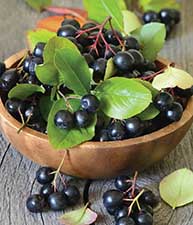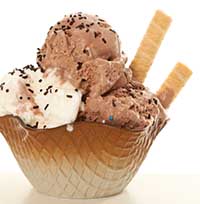Top trends for 2014; Salty snacks evolve; Ethnic food safety
NEWS
 Bell shares top flavors and trends
Bell shares top flavors and trends
The worldwide marketing teams of Bell Flavors & Fragrances Inc. have compiled 2014’s top 10 trends and flavors to aid developers launching products. Bell’s list includes huacatay, kimchi, ginger, aronia berry, Szechuan peppercorn, Asian cooking sauces, almond caramel popcorn, whole grains, pepita, and halo halo.
Many of the macro trends from 2013 will continue, according to the company. Allergen-free reformulations of cooking sauces such as red miso, oyster, soy, peanut, and fish will be offered to address the allergen concerns that some consumers have.
Bell doesn’t see the gluten-free craze ending anytime soon, and predicts flavors will play an important role in developing gluten-free products in order to meet consumer demand for high-quality, great-tasting products.
Because consumers continue to pursue healthy lifestyles, products in the marketplace will put a healthy spin on familiar flavors. In addition, a new generation of superfruits, such as Bell’s featured flavor, aronia berry, are appearing in grocery stores nationwide.
Bell expects high-profile events such as the World Cup and Olympics to arouse interest in Brazilian and other South American cultures and cuisines. Latin American and Asian flavors, as well as heat-inducing flavors, should continue in popularity, the company says.
Companies quadruple calorie slash
The 16 leading U.S. food and beverage companies that promised to collectively remove 1.5 trillion calories from the U.S. marketplace by 2015 have exceeded that pledge by more than 400%.
Working together as part of the Healthy Weight Commitment Foundation (HWCF), the cereal, snack, canned soup, and bottled beverage producers sold 6.4 trillion fewer calories in 2012 than they did in the pledge’s baseline measurement year of 2007, according to an independent evaluation funded by the Robert Wood Johnson Foundation. This decline translates into a reduction of 78 calories per person per day.
Collectively the companies produced 36% of the calories from all packaged foods and beverages sold in the United States in 2007. They succeeded in their mission by developing new lower-calorie options, changing existing products so that they had fewer calories, and changing portion sizes to introduce more lower-calorie packaging. HWCF’s goal is to help reduce obesity, especially childhood obesity.
The list of participating food and beverage companies includes Bumble Bee Foods, Campbell Soup Co., ConAgra Foods (includes Ralston Foods), General Mills, Hillshire Brands (previously Sara Lee Corp.), Kellogg Co., Kraft Foods Group/Mondelez, Mars Inc., McCormick & Co., Nestlé USA, PepsiCo, Post Foods, the Coca-Cola Co., the Hershey Co., the J.M. Smucker Co., and Unilever.
--- PAGE BREAK ---
Supreme Court upholds Monsanto seed patents
Organic farmers and other activists attempting to prevent biotech company Monsanto from suing farmers whose fields inadvertently became contaminated with plants containing the company’s genetic modifications were dealt a blow by the U.S. Supreme Court in January, Reuters reports.
In the landmark federal lawsuit, Organic Seed Growers and Trade Association et al. v. Monsanto, the court upheld Monsanto’s biotech seed patents, which include those for corn, soybeans, cotton, and canola. Monsanto has brought suit against more than 100 farmers and has won judgments against those the court found had used its seed without paying the required royalties.
In response to the verdict, Monsanto released this statement: “Monsanto never has and has committed it never will sue if our patented seed or traits are found in a farmer’s field as a result of inadvertent means. The lower courts agreed there was no controversy between the parties, and the Supreme Court’s decision not to review the case brings closure on this matter.”
 Wax oleogels and ice cream structure
Wax oleogels and ice cream structure
Rice bran wax (RBW) oleogel has the potential to develop fat structure in ice cream in the presence of glycerol monooleate and sufficiently high concentrations of oleogel, according to a study investigating the influence of emulsifiers, waxes, fat concentration, and processing conditions on the application of wax oleogel to replace solid fat content and create optimal fat structure in ice cream.
The use of oil gelation as an alternative to nondairy saturated fats such as coconut or palm kernel oils is of interest, provided that it will establish appropriate fat structure, the study’s authors report.
Daniele C. Zulim Botega, Alejandro G. Marangoni, Alexandra K. Smith, and H. Douglas Goff authored the study, “Development of Formulations and Processes to Incorporate Wax Oleogels in Ice Cream,” which appeared in Journal of Food Science, doi: 10.1111/1750-3841.12248.
Healthier salty snacks to expand segment
Frenzied lifestyles are leading Americans to snack more than ever. They like salty snacks, worry about their health, and look for ways to hang on to both.
Marketers have risen to this challenge by developing healthier, tasty salty snack foods. As a result, the segment is projected to generate accelerated growth over the 2014–2018 period, according to market research publisher Packaged Facts in its recent report, Salty Snacks in the U.S.
Another part of salty snacks’ metamorphosis into “better-for-you” products is due to labeling changes that mirror other “better-for-you” positioned foods such as fruit- and nut-based snacks. Marketers have accomplished this by calling out attributes such as “non-GMO,’ “vegan,” or “organic,” as well as employing subjective labels like “local,” “pure,” “real,” “natural,” “safe,” “clean,” “minimally processed,” and “allergy-friendly,” according to David Sprinkle, research director for Packaged Facts.
The report reveals that 90% of U.S. households report eating salty snacks within the past 30 days, 50 million people say salty snacks are their favorite type of snack, and 14 million fitness and nutrition devotees see no reason to give up their beloved salty munchies.
--- PAGE BREAK ---
Ethnic food safety needs more research
As the demand for ethnic cuisine increases, so have reports of foodborne illness outbreaks associated with ethnic foods, according to a study published in Comprehensive Reviews in Food Science and Food Safety.
Research on food safety issues involving ethnic foods is lacking, the study, “Popular Ethnic Foods in the United States: A Historical and Safety Perspective,” authored by Jee Hye Lee, Johye Hwang, and Azlin Mustapha, asserts.
Fresh ingredients, rather than particular types of ethnic foods, contribute to foodborne illness outbreaks. Another contributing factor is food handlers who are not familiar with the ingredients used in ethnic foods, according to the report.
The paper reviews Hazard Analysis Critical Control Points (HACCP) implementation, food safety training, and inspection score systems related to ethnic foods and examines how they can be used to prevent foodborne illness outbreaks.
The review also analyzes statistics on foodborne illness outbreaks associated with ethnic foods, based on data from the Centers for Disease Control and Prevention about the number of outbreaks, the causative microorganisms, the food vectors, and the locations where foodborne disease outbreaks have occurred. It appeared in Comprehensive Reviews in Food Science and Food Safety, doi: 10.1111/1541-4337.12044
What’s new with food companies
• D.D. Williamson acquired the food coloring product line and related processing equipment from Danisco USA Inc., a part of DuPont Nutrition & Health.
• Cargill’s cocoa and chocolate business broke ground on a $48 million project to double the capacity of its Belgian chocolate production facility in Mouscron, Belgium.
• Olam Spices & Vegetable Ingredients has expanded the size and capabilities of its spices processing facility in Ho Chi Minh City, Vietnam.
• 3M Food Safety has received certification from the AOAC Research Institution’s Performance Tested Methods Program for its new 3M™ Petrifilm™ Rapid Yeast and Mold Count Plate.
• P.L. Thomas & Co. Inc. is now named PLT Health Solutions Inc. to reflect its status as a supplier of ingredient solutions to consumer products companies and as a strategic development partner to ingredient suppliers worldwide.
• Back to Nature Foods Co. LLC, a portfolio company of Brynwood Partners VI L.P., has acquired the SnackWell’s cookies and snacks business from Mondelez Global LLC.
• Stevia producer and marketer PureCircle received a No Objection letter from the U.S. Food and Drug Administration for the use of PureCircle Rebaudioside M (Reb M) as a general-purpose sweetener for foods and beverages in the United States.
• Vancouver, B.C.-based EnWave Corp. signed a collaboration agreement with an option to license with Pacific Live LLC to develop high-value, premium-quality dehydrated seafood products using the company’s Radiant Energy Vacuum (REV) technology.
• Frutarom Switzerland Ltd. Health BU joined Aquanova AG, the German pharma GMP manufacturer of ingredient formulas, to market NovaSOL® curcumin, a solubilized, highly bioavailable form of curcumin for the dietary supplement and food manufacturing industries.
• WILD Flavors Inc. has acquired Alfrebro LLC, a leading manufacturer of natural extracts and aroma chemicals, advanced propriety technologies, and expanded processing capabilities.
• TNO of the Netherlands and FOODPOLIS of South Korea signed a Memorandum of Understanding agreeing to develop research collaborations in food innovation and nutritional health.
• Mondelez International announced it would invest $190 million in the Indian state of Andhra Pradesh to establish the company’s largest manufacturing plant in the Asia Pacific.
• Symrise was awarded first prize for Sustainability Initiative of the Year in the Fi Europe Excellence Awards.
• Tate & Lyle won the Food Ingredients Europe Beverage Innovation of the Year award for its PROMITOR® Soluble Gluco Fibre.
• Archer Daniels Midland Co. rebranded its Merckens® line of products and expanded the brand into the gourmet baking industry.
